Hi dear friends!
This week I’ll focus on flour and will share with you many interesting facts around this major topic.
Flour is one of the basic ingredients in confectionery, precisely because it is responsible for the consistency of the dough.
Wheat flour is the most used in traditional confectionery recipes and can be found in the market as whole wheat flour (when all the grain is used) and regular flour (obtained from the outer part of the grain).
However, there is an increase in gluten allergies or intolerances worldwide. And many food scientists and nutritionists also suggest to avoid or remove wheat flour from our daily diets.
So, my fellow bakers, let me tell you the following: when substituting wheat flour, it is important to know that it is necessary to associate two to three types of gluten-free flour with different characteristics, to be able to give recipes the same characteristics that wheat flour offers: elasticity, structure, moisture, softness and flexibility thanks to the action of gluten.
There are several options to substitute it: corn flour, oatmeal, almonds, coconut, rice, flaxseed, green banana, sorghum, etc. They offer more than just texture in recipes because they are rich in nutrients as well.
Let’s learn a little about each alternative to wheat flour:

Rice flour
Nutrition fact
Totally gluten-free and rich in fiber, it gives a feeling of satiety and eliminates waste and toxins from the intestine. The fiber in brown rice flour is also great for improving cholesterol and blood sugar levels.
Use in baking
It is the easiest substitution to be found and the most used in recipes for breads and cakes because – despite not having gluten – it also gives structure to the dough. It is important to use it in association with other flours because it tends to make the preparation drier when used on its own.
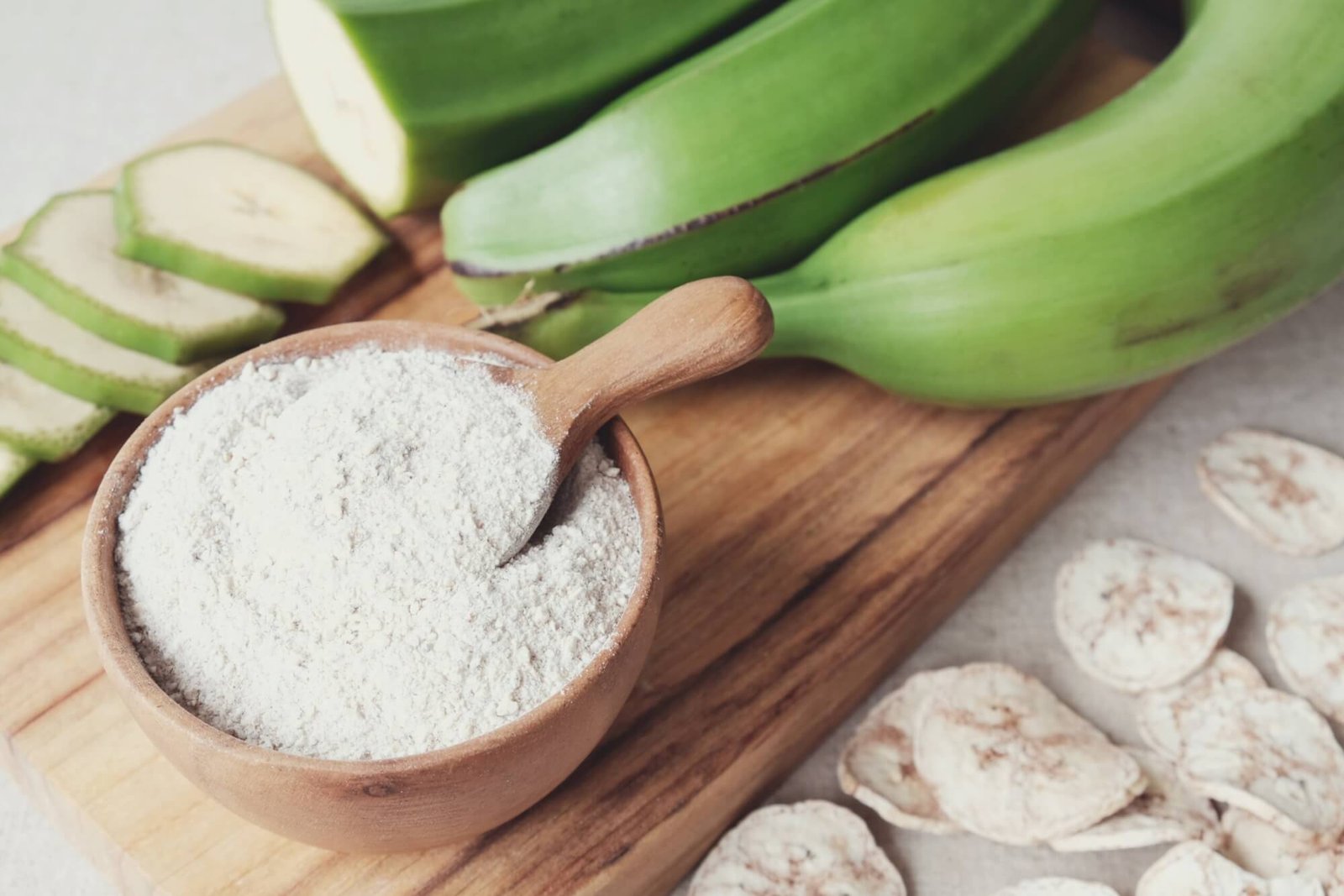
Green Banana flour
Nutrition fact
The main component that makes this flour very interesting as a replacement for wheat flour is resistant starch, a nutrient that is digested in the small intestine. This characteristic makes the green banana flour very beneficial to the intestine in general.
Use in baking
It is a great alternative for people with diabetes, because it has a low glycemic index. It gives a moist and fluffy texture in most healthy confectionery preparations. However, some recipes can become more gummy with it.
/sorghumflourPamela_d_mcadams-921b05ce7aa64027bf2392a532124dbd.jpg)
Sorghum flour
Nutrition fact
Sorghum is a grain originally from Asia. It is a source of fiber, protein, vitamins and minerals and also has antioxidant and anti-inflammatory properties.
Use in baking
With a slightly sweet flavor, sorghum flour provides a soft and light texture to recipes and is gluten-free.
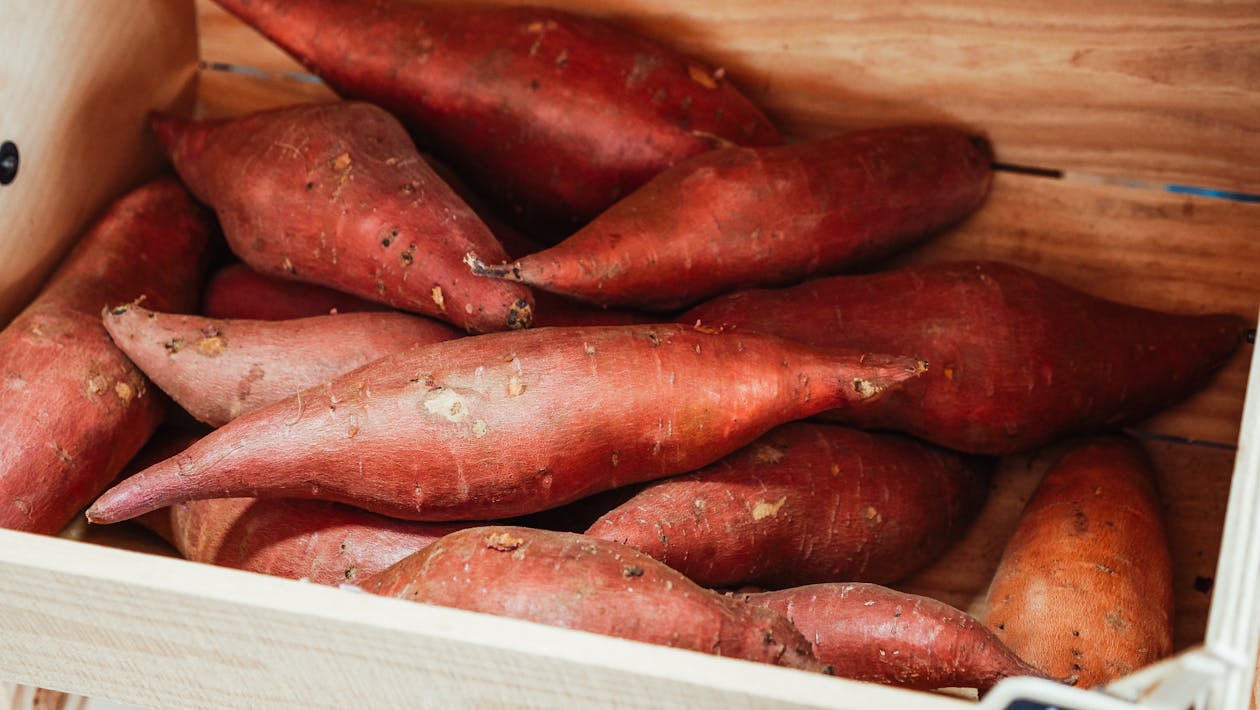
Sweet Potato flour
Nutrition fact
With the remarkable characteristic of pink peel, sweet potato is a tuber of great nutritional value and low glycemic index, being indicated for people who suffer from diabetes. Sweet potato flour is gluten-free and high in fiber.

Flaxseed flour
Nutrition fact
In addition to the high fiber content, flaxseed flour has large amounts of omega 3 and 6, important for cholesterol control.
Use in baking
It is widely used in juices and vitamins, but it also has a little place in recipes for healthy cakes and pies.
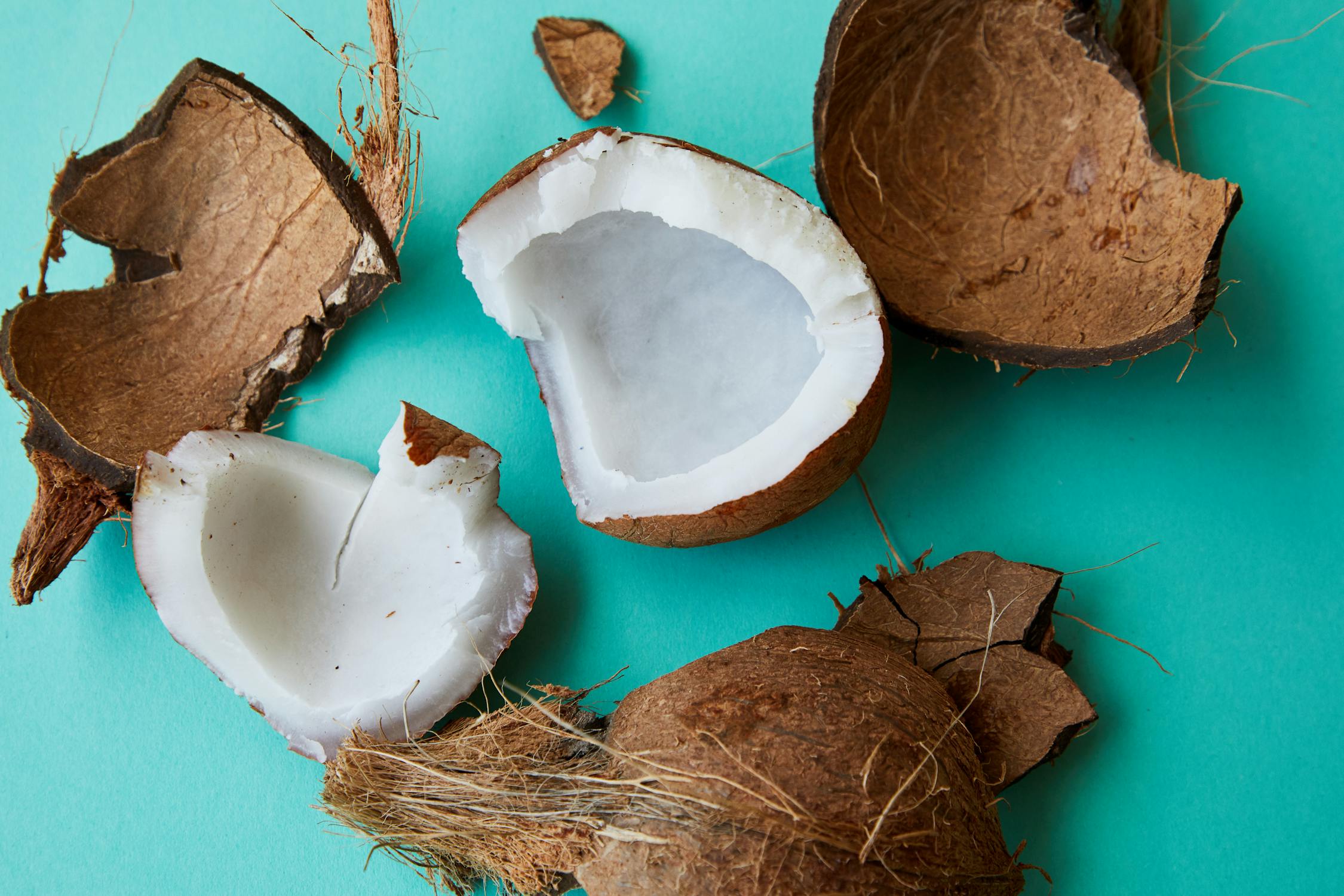
Coconut flour
Nutrition fact
Coconut flour is low on the glycemic index, low in carbohydrates, and high in protein, but like coconut, it is high in fat, yet it is a good fat.
Use in baking
It has a lot of fiber and, because of this, absorbs a lot of moisture in the dough, which can make it dry if it is not used in the right proportion. To have good results in baking you will need to add more liquids and associate it with other flours that offer structure.

Almond flour
Nutrition fact
It is rich in protein and fiber, which leaves it with a low glycemic index. It must be stored in the refrigerator so that it does not rancify.
Use in baking
It is very good for structuring sweet dough. It has a neutral flavor, and provides fat (good fat), volume, softness, and humidity to the dough.
/chestnut-flour-e44c1f281cc041f0aea124d781399f55.jpg)
Chestnut flour
Nutrition fact
Like almond flour, chestnut flour or any other oleaginous (Brazil nut, cashew nut, baru nut, almond, walnut, hazelnut, macadamia, pistachio, peanut).
Use in baking
Chestnut flour is rich in good fat and contributes significantly to reducing the glycemic load of the dessert or cake. Because of the amount of fat, it makes the dough lighter and more moist, but it is important to use it associated with flours that provide structure.
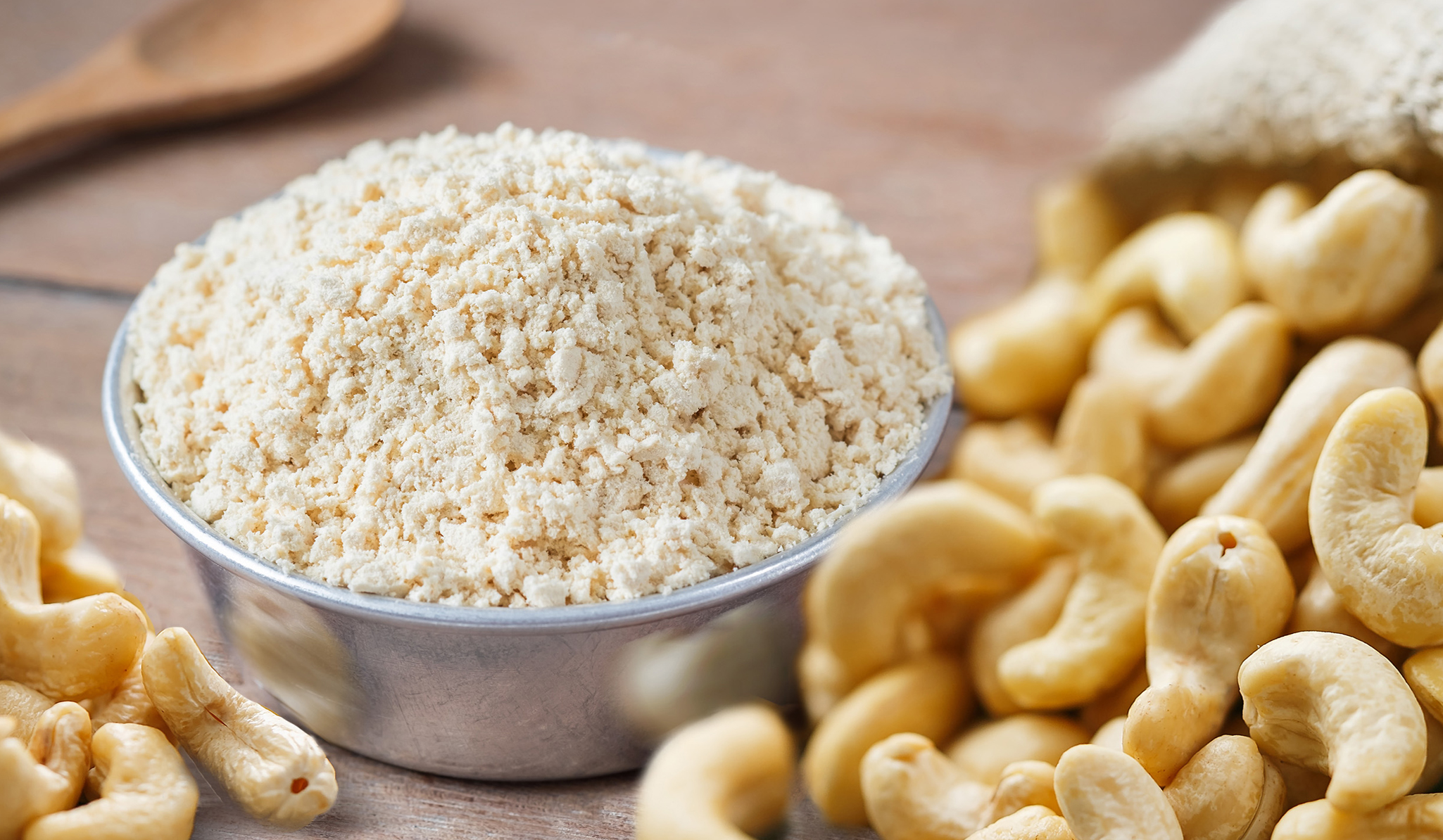
Cashew Nut flour
Nutrition fact
Besides helping to prevent heart disease, the cashew nut is an oilseed that is good for bone maintenance, because it is rich in magnesium and calcium.
Use in baking
Cashew flour also provides softness, volume, and humidity in healthy confectionery batter preparations.

Peanut flour
Nutrition fact
It has low carbohydrate content, is a source of fiber and helps to control cardiovascular disease and blood sugar, and also has a good amount of protein.
Use in baking
It also has the lowest fat content when compared to other oilseeds, so it is necessary to make the necessary adjustments to compensate for it in the recipe.
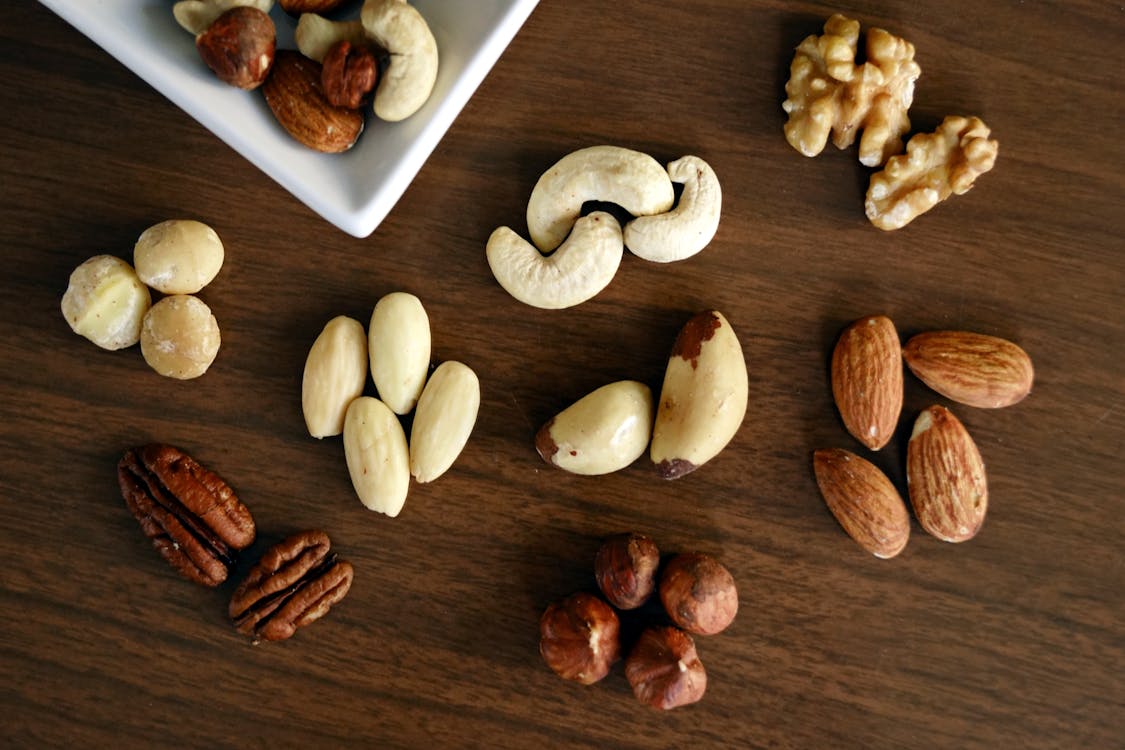
Walnut and Macadamia Nut flours
Nutrition fact
These are the fattiest flours among the oilseeds, so the question of adjustments applies to them as well.
Use in baking
I suggest reducing the amount in the recipes by 15% if you are going to use these flours as a substitution.
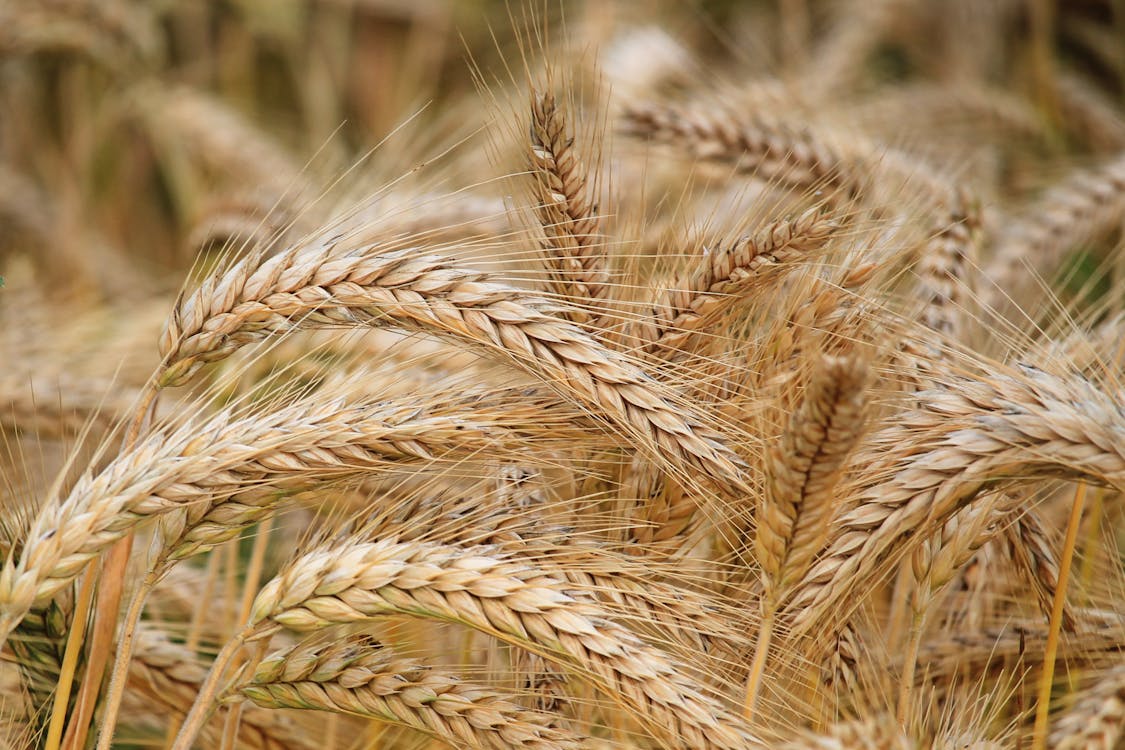
Buckwheat flour
Nutrition fact
Gluten- and grain-free, organic buckwheat flour has more protein, dietary fiber, and B vitamins than an equal weight of oat or whole wheat flour and is an excellent source of potassium and essential amino acids.
Use in baking
Buckwheat flour can be particularly tricky in batters because excessive mixing or beating may produce some rather stiff (and bad tasting) batter.
Recipes like pancakes, waffles, and crepes get plenty of structure from eggs, so it’s relatively safe and easy to replace regular all-purpose wheat flour with a gluten-free flour such as buckwheat. There is little risk of overbeating the dough.

Oat flour
Nutrition fact
Oat flour is gluten free, but because of cross-contamination you have to make sure to look for certified gluten-free oat flour. This flour is high in beta-glucans, a phytonutrient that helps keep the immune system and reduce LDL cholesterol.
Use in baking
Oat flour behaves very much like wheat flour. It lends a soft and fluffy texture to baked goods, with a mild flavor. Note that allergies vary based on individual biology, so always make sure to ask before including oat flour.
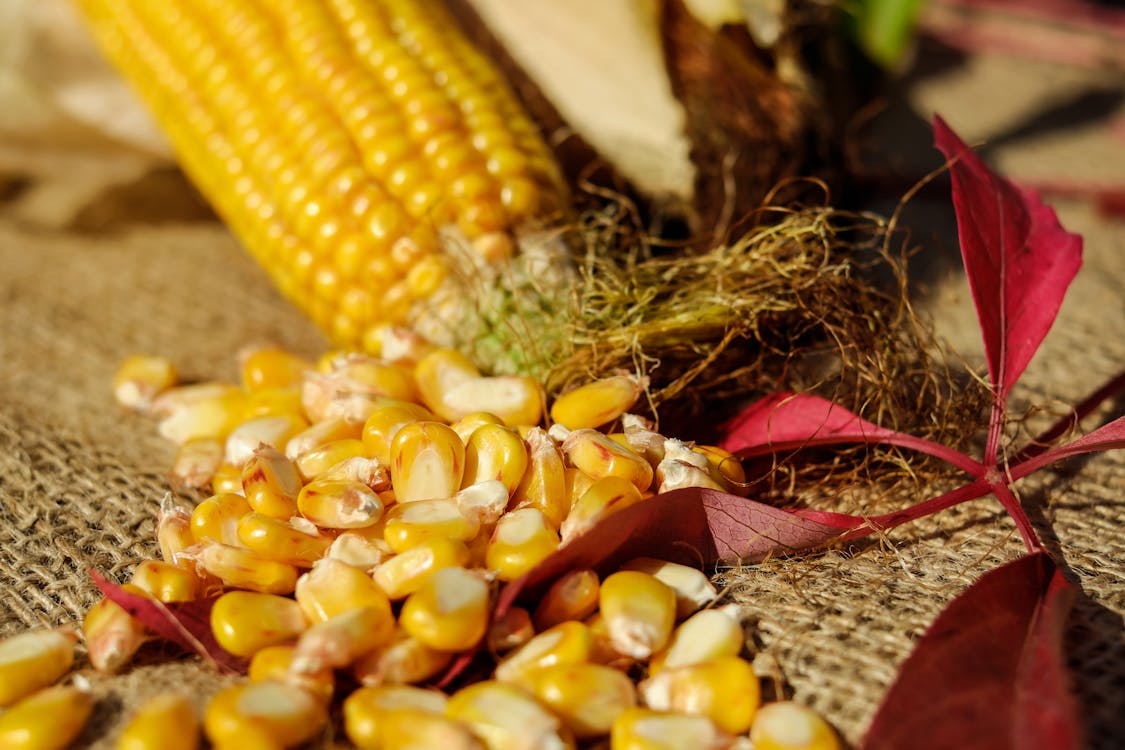
Cornmeal or Maize flour
Nutrition fact
It is a flour that tends to absorb a lot of water and therefore can make the dough heavy. It is better to use organic corn flour for its better nutritional characteristics.
Use in baking
Cornmeal provides structure and flavor to the dough. It has a very strong corn flavor and therefore it is better used in combination with other flours such as almond or oleaginous flours to add lightness and harmony in flavor.

Chickpea flour
Nutrition fact
Chickpea flour is high in protein, fiber, and B vitamins.
Use in baking
It is a flour that provides structure to the recipe, but it can leave an aftertaste, so it is nice to use it in combination with other flours.

Teff flour
Nutrition fact
Teff is a traditional Ethiopian grain that’s rich in fiber, protein, and minerals. Its flour is quickly becoming a popular gluten-free alternative to wheat flour. Teff is a good source of copper, iron, magnesium, potassium, phosphorus, manganese, zinc, and selenium. Additionally, it’s an excellent source of fiber and protein, boasting all the essential amino acids, which are the building blocks of protein in your body.
Use in baking
It’s highly nutritious and naturally gluten-free. However, it’s not as widely available as other gluten-free flours and may be more expensive.

Hemp flour
Nutrition fact
Hemp flour is Vegan/Vegetarian, Grain-Free, Gluten-Free, Dairy-Free, Paleo-Friendly, Keto-Friendly.
Use in baking
Adding hemp flour to your regular recipe will essentially turn any plain baked good into a healing superfood. It has 60% soluble fiber, and is packed with healthy nutrients like zinc, magnesium, calcium, iron, phosphorus, potassium, vitamins A, B, D and E, and many amino acids.
However, Hemp flour has a bit of a salty taste and does not rise. It must be mixed with other flours in home-cooked creations, in a ratio of maximum 25%.

Red Lentil flour
Nutrition fact
This flour has lots of protein and fiber. Lentils are a small but nutritionally mighty member of the pulse family, and are a very good source of cholesterol-lowering fiber. Not only do lentils help lower cholesterol, but they are also of special benefit in managing blood-sugar disorders since their high fiber content prevents blood sugar levels from rising rapidly after a meal.
Use in baking
A great alternative for those avoiding gluten or grains, it works in both sweet and savory recipes. You can use it in flatbreads, crackers or pancakes.
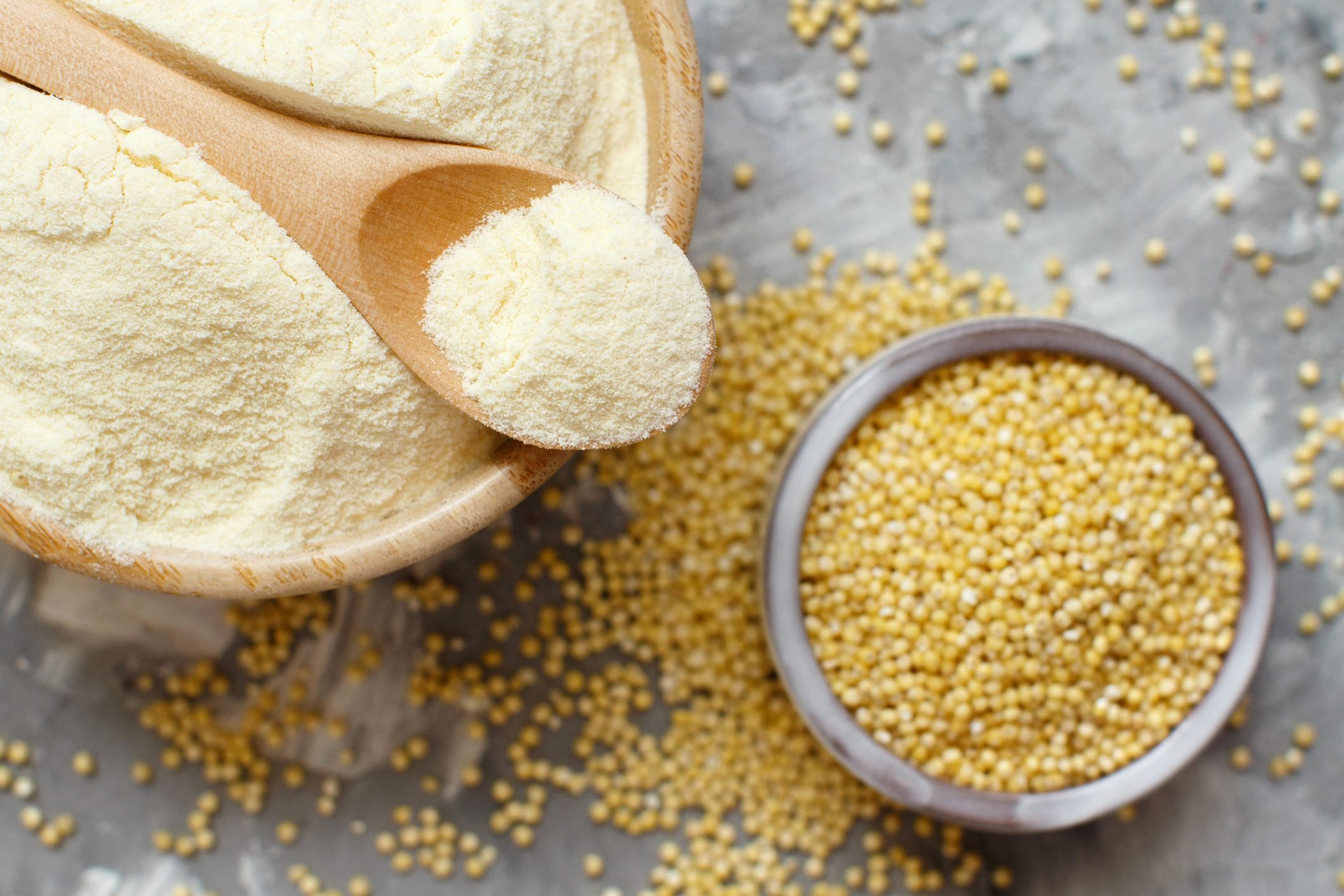
Millet flour
Nutrition fact
Millet Flour is rich in fiber, antioxidants, vitamins, and minerals. It is gluten free and has a low glycemic index.
Use in baking
Tender, mild, and finely ground, millet flour lends a tender texture to baked goods. When combined with other gluten-free flours, such as gluten-free oat flour and rice flour or tapioca flour, it creates a versatile all-purpose-like blend.
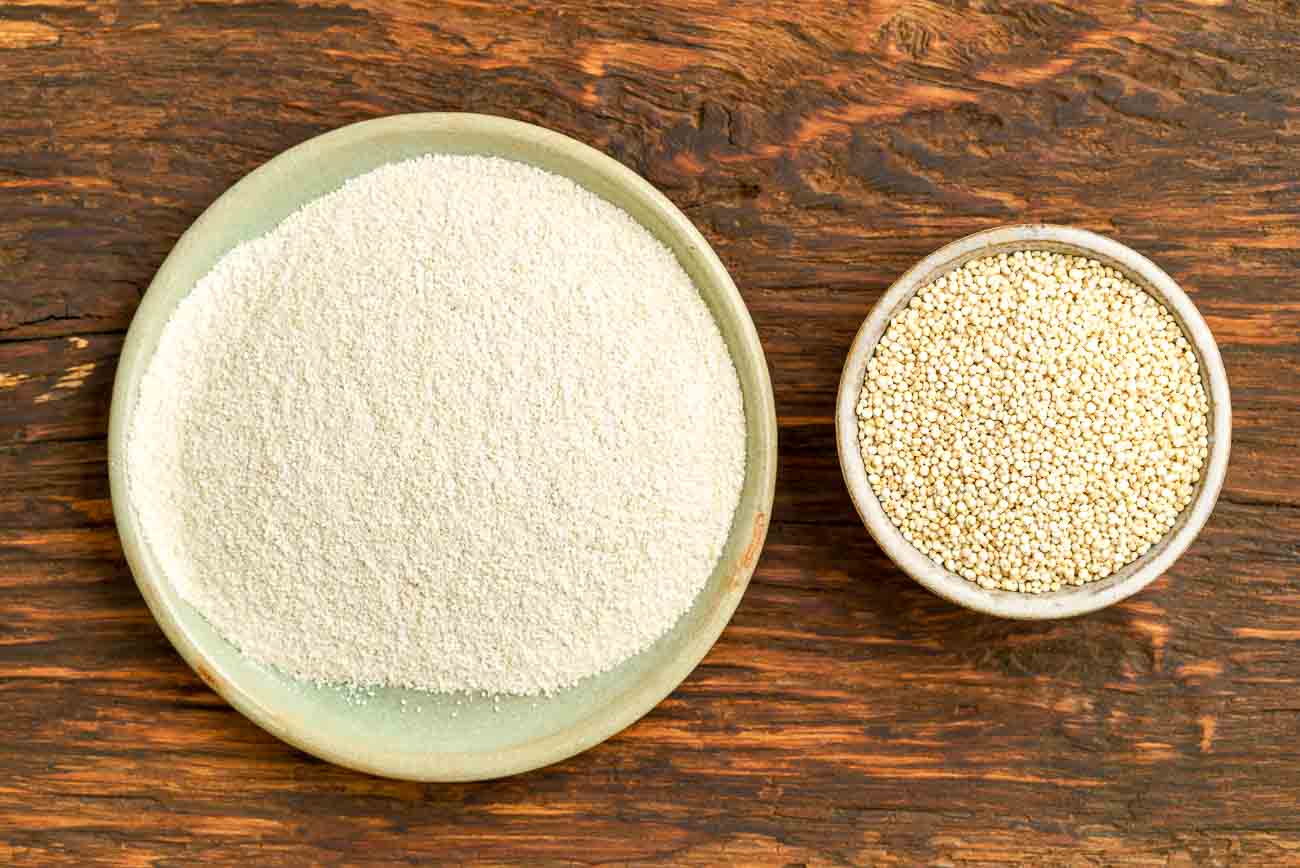
Quinoa flour
Nutrition fact
Quinoa flour is rich in calcium, iron, protein, and fiber.
Use in baking
It is a structural flour, but it has a strong and bitter flavor, so it is important to dose the amount and use it associated with other flours. It fits well associated with the flour mix of cookies and crackers.

Amaranth flour
Nutrition fact
Amaranth flour is rich in protein, iron, calcium and fiber.
Use in baking
It is a flour that gives structure and also needs to be associated with a mix of flours. It has a very nice feature: it turns the color of baked goods – such as cake batter and cookies – more golden.
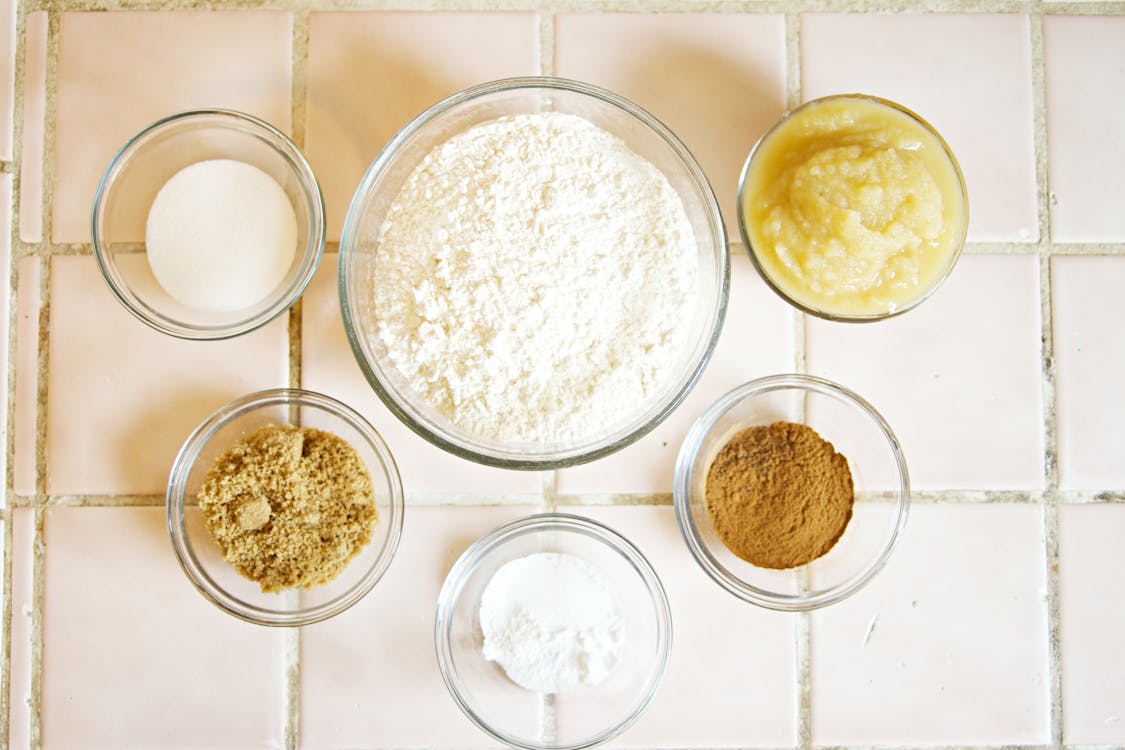
Gluten Free flour
Nutrition fact
The gluten-free flour you find in supermarkets, it is composed of a mix of gluten-free flours that are in a proportion suitable to confer a role similar to wheat flour in recipes.
Use in baking
It gives structure to the recipes, but it is interesting to use it associated with a flour with higher content of good fats such as almond flour, coconut flour or any other oleaginous flour.
As you see, there are many flour options out there for you to use in your recipes. Be aware that you cannot substitute wheat flour 1 to 1 with any other flour (for example: 100g wheat flour to 100g almond or rice flour). As I’ve mentioned earlier you will need 2 -3 flours to substitute wheat flour.
Head to my website and get my free recipe-booklets to see which flours I use and how I combine them. You’ll find the link down below!
Please share with me your doubts, baking successes or failures and your opinions, by leaving a comment in our comments section down below! We would love to hear from you!
Have a sweet and healthy week,
Your Leonor.

